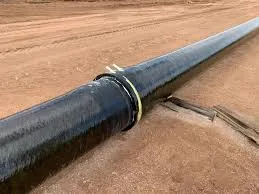
-
 Afrikaans
Afrikaans -
 Albanian
Albanian -
 Amharic
Amharic -
 Arabic
Arabic -
 Armenian
Armenian -
 Azerbaijani
Azerbaijani -
 Basque
Basque -
 Belarusian
Belarusian -
 Bengali
Bengali -
 Bosnian
Bosnian -
 Bulgarian
Bulgarian -
 Catalan
Catalan -
 Cebuano
Cebuano -
 China
China -
 China (Taiwan)
China (Taiwan) -
 Corsican
Corsican -
 Croatian
Croatian -
 Czech
Czech -
 Danish
Danish -
 Dutch
Dutch -
 English
English -
 Esperanto
Esperanto -
 Estonian
Estonian -
 Finnish
Finnish -
 French
French -
 Frisian
Frisian -
 Galician
Galician -
 Georgian
Georgian -
 German
German -
 Greek
Greek -
 Gujarati
Gujarati -
 Haitian Creole
Haitian Creole -
 hausa
hausa -
 hawaiian
hawaiian -
 Hebrew
Hebrew -
 Hindi
Hindi -
 Miao
Miao -
 Hungarian
Hungarian -
 Icelandic
Icelandic -
 igbo
igbo -
 Indonesian
Indonesian -
 irish
irish -
 Italian
Italian -
 Japanese
Japanese -
 Javanese
Javanese -
 Kannada
Kannada -
 kazakh
kazakh -
 Khmer
Khmer -
 Rwandese
Rwandese -
 Korean
Korean -
 Kurdish
Kurdish -
 Kyrgyz
Kyrgyz -
 Lao
Lao -
 Latin
Latin -
 Latvian
Latvian -
 Lithuanian
Lithuanian -
 Luxembourgish
Luxembourgish -
 Macedonian
Macedonian -
 Malgashi
Malgashi -
 Malay
Malay -
 Malayalam
Malayalam -
 Maltese
Maltese -
 Maori
Maori -
 Marathi
Marathi -
 Mongolian
Mongolian -
 Myanmar
Myanmar -
 Nepali
Nepali -
 Norwegian
Norwegian -
 Norwegian
Norwegian -
 Occitan
Occitan -
 Pashto
Pashto -
 Persian
Persian -
 Polish
Polish -
 Portuguese
Portuguese -
 Punjabi
Punjabi -
 Romanian
Romanian -
 Russian
Russian -
 Samoan
Samoan -
 Scottish Gaelic
Scottish Gaelic -
 Serbian
Serbian -
 Sesotho
Sesotho -
 Shona
Shona -
 Sindhi
Sindhi -
 Sinhala
Sinhala -
 Slovak
Slovak -
 Slovenian
Slovenian -
 Somali
Somali -
 Spanish
Spanish -
 Sundanese
Sundanese -
 Swahili
Swahili -
 Swedish
Swedish -
 Tagalog
Tagalog -
 Tajik
Tajik -
 Tamil
Tamil -
 Tatar
Tatar -
 Telugu
Telugu -
 Thai
Thai -
 Turkish
Turkish -
 Turkmen
Turkmen -
 Ukrainian
Ukrainian -
 Urdu
Urdu -
 Uighur
Uighur -
 Uzbek
Uzbek -
 Vietnamese
Vietnamese -
 Welsh
Welsh -
 Bantu
Bantu -
 Yiddish
Yiddish -
 Yoruba
Yoruba -
 Zulu
Zulu
Creating a High-Performance FRP Pipeline for Enhanced Data Processing
Understanding FRP Pipeline An Insight into Fiber Reinforced Plastic Technology
FRP (Fiber Reinforced Plastic) has emerged as a significant technological advancement in various industrial applications, particularly for pipeline construction and maintenance. The use of FRP in pipeline systems offers a unique combination of benefits, making it an attractive alternative to traditional materials such as steel and concrete. This article delves into the characteristics of FRP pipelines, their advantages, and their diverse applications.
What is FRP?
Fiber Reinforced Plastic is a composite material made from a polymer matrix reinforced with fibers. The most common fibers used in FRP are glass, carbon, and aramid, with glass fiber being the most prevalent due to its strength, durability, and cost-effectiveness. The polymer can be polyester, vinyl ester, or epoxy, providing flexibility in terms of application and performance. The combination of fibers and polymer results in a lightweight, strong, and corrosion-resistant material.
Advantages of FRP Pipelines
1. Corrosion Resistance One of the most notable characteristics of FRP pipelines is their excellent resistance to chemical and environmental degradation. Unlike metal pipes that can corrode and require frequent maintenance, FRP is inert to most chemicals and can withstand harsh environmental conditions, making it ideal for industries such as oil and gas, sewage, and chemical processing.
2. Lightweight FRP is significantly lighter than traditional materials, which not only simplifies transport and installation but also reduces the overall structural load. This lightweight property allows for easier handling and decreased installation times, contributing to project efficiency and cost savings.
3. Flexibility and Design Freedom FRP materials can be molded into various shapes and sizes, offering greater design flexibility. This adaptability is particularly beneficial in complex pipeline structures where traditional materials may be difficult to implement.
frp pipeline

4. Longevity and Low Maintenance The durability of FRP pipelines contributes to their long lifespan, often exceeding 30 years when properly installed and maintained. Their resistance to corrosion and other damaging factors means that routine inspections and repairs are less frequent, significantly reducing lifetime maintenance costs.
5. Thermal Insulation FRP pipelines provide good thermal insulation, which can be advantageous in applications where temperature control is critical. This characteristic helps in conserving energy and maintaining the integrity of the transported materials.
Applications of FRP Pipelines
FRP pipeline technology is utilized across numerous sectors. In the oil and gas industry, FRP is used for transporting corrosive fluids and gases. In water and wastewater management, FRP offers reliable solutions for sewer systems and treatment plants. Additionally, the chemical industry employs FRP pipelines for conveying various chemicals safely.
Furthermore, with the increasing focus on sustainable practices, FRP’s recyclability makes it an eco-friendly choice compared to traditional materials. As industries move towards green technologies, the adoption of FRP pipelines is expected to grow.
Conclusion
The advancements in Fiber Reinforced Plastic technology mark a significant evolution in pipeline construction and maintenance. The unique properties of FRP, including its corrosion resistance, light weight, and flexibility, address the challenges faced by industries today. As the demand for durable and sustainable infrastructure continues to rise, the FRP pipeline will undoubtedly play a crucial role in shaping the future of pipeline technology. Embracing these innovative solutions can lead industries towards more efficient, cost-effective, and environmentally responsible operations.









